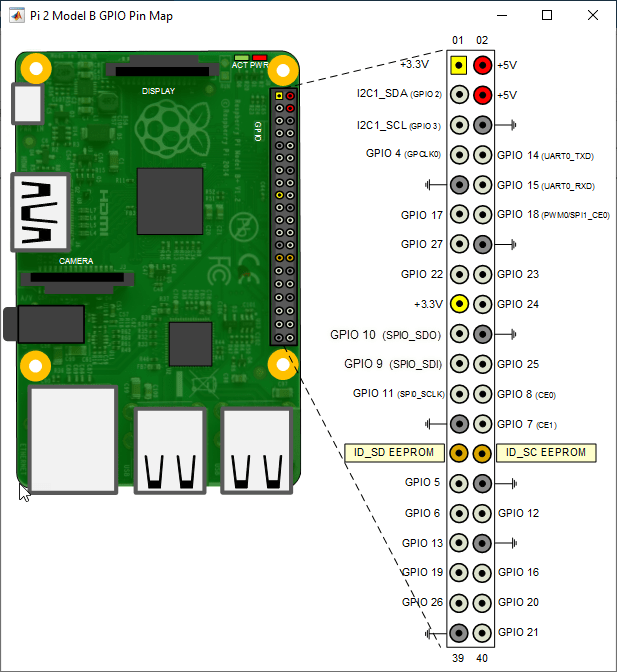spidev
Connection to SPI device on Raspberry Pi hardware
Add-On Required: This feature requires the MATLAB Support Package for Raspberry Pi Hardware add-on.
Description
This object represents a connection from the MATLAB® software to the SPI device on the Raspberry Pi® hardware. To exchange data with the SPI device, use this object with the functions listed in Object Functions.
Creation
Description
myspidevice = spidev(mypi,channel,mode,speed,BitsPerWord)
Input Arguments
Properties
Object Functions
writeRead | Write data to and read data from SPI device |
